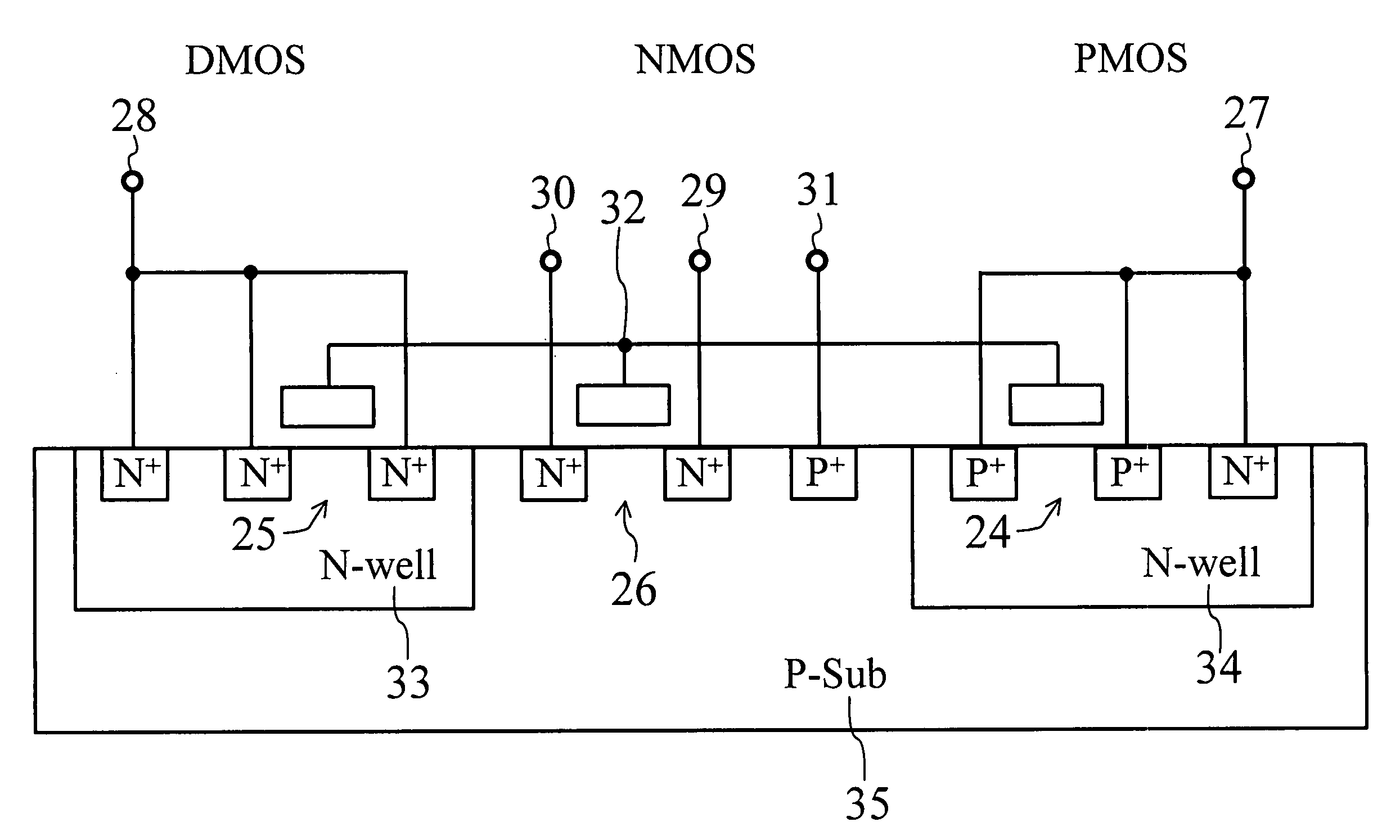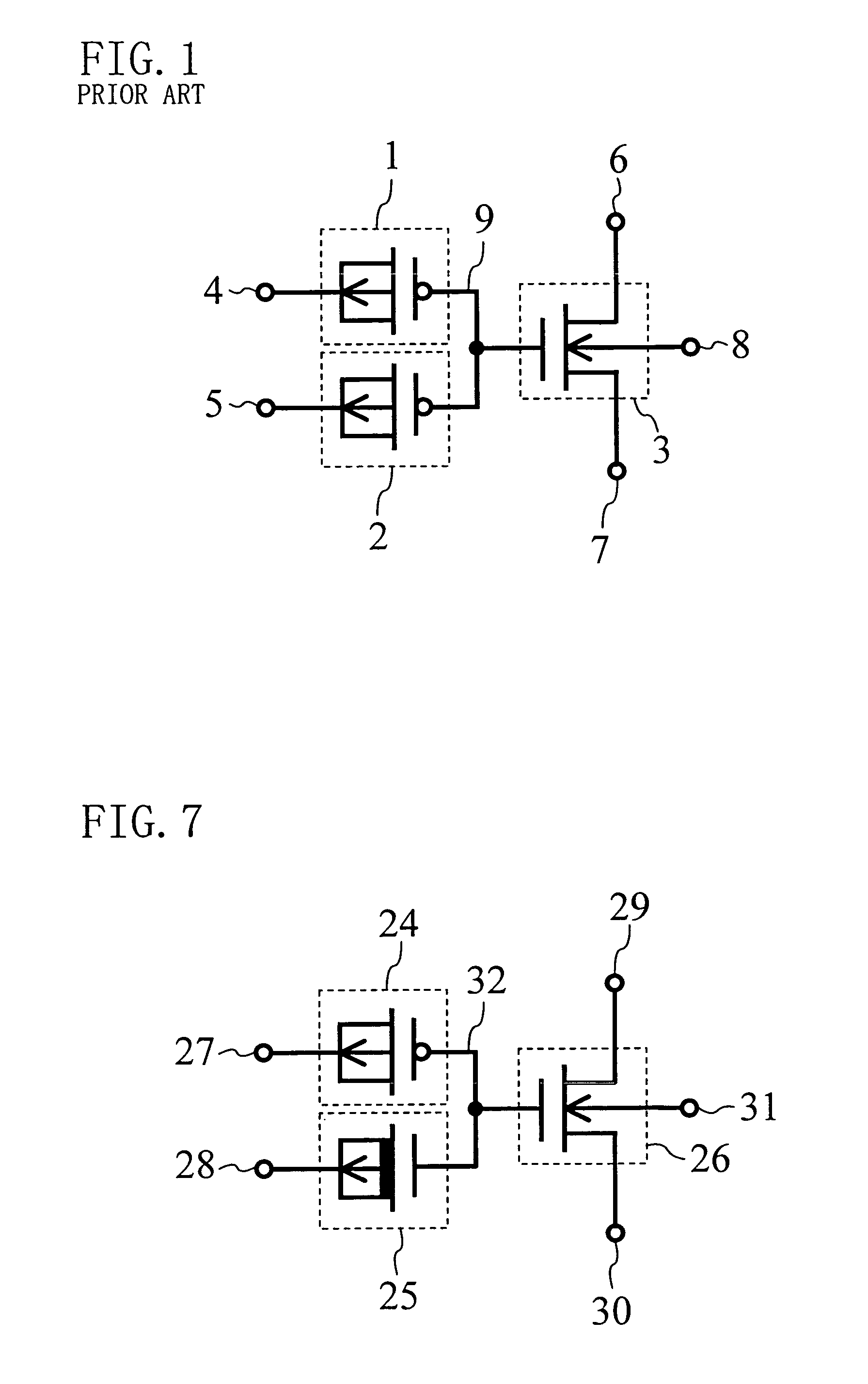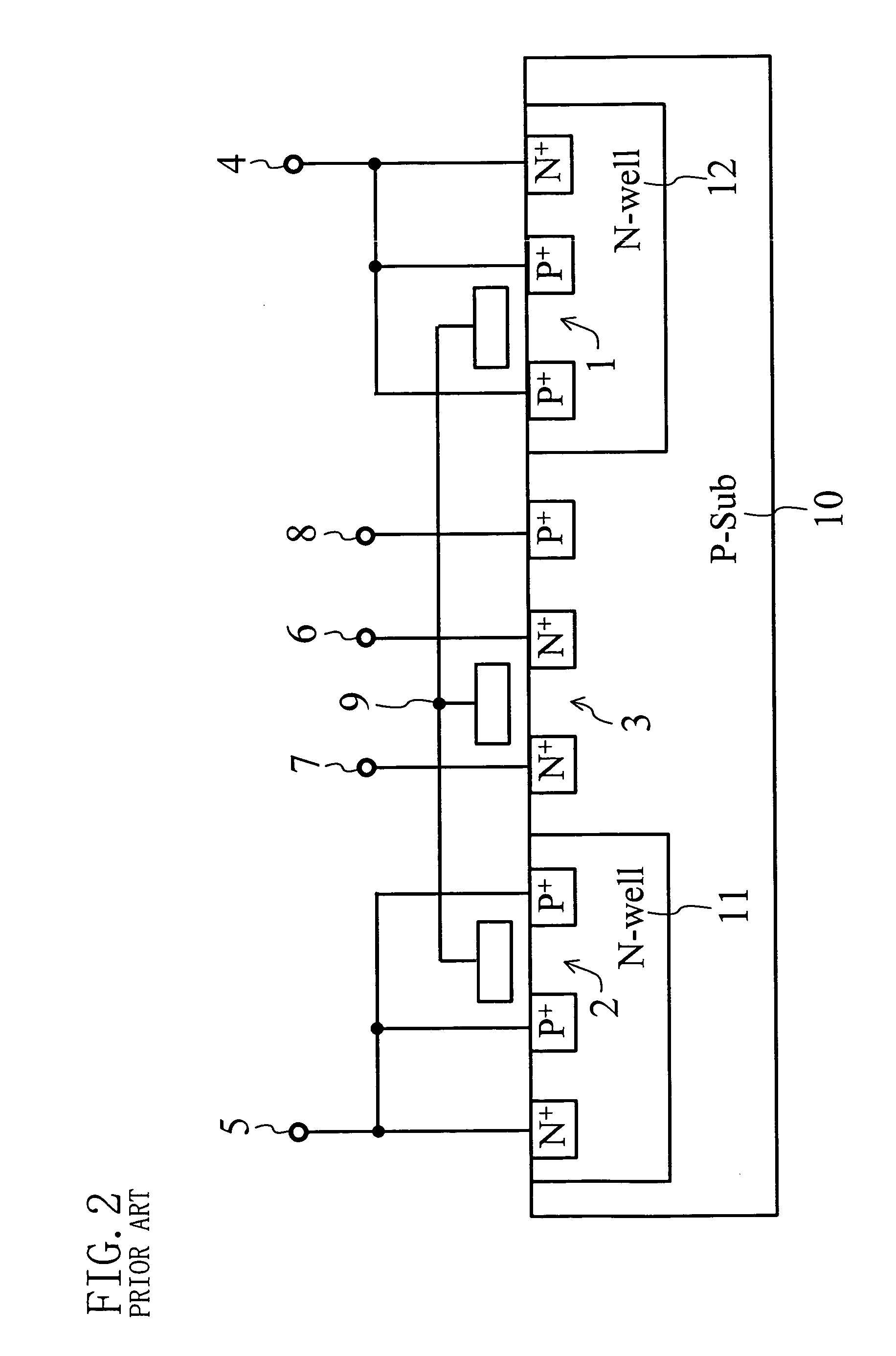Nonvolatile semiconductor memory device
a semiconductor memory and non-volatile technology, applied in semiconductor devices, digital storage, instruments, etc., can solve the problems of information leakage, no leading-edge process can be used, and increase the cost of processing, so as to prevent the increase of the area of a memory element, the effect of reducing the amount of applied bias and increasing the erase speed
- Summary
- Abstract
- Description
- Claims
- Application Information
AI Technical Summary
Benefits of technology
Problems solved by technology
Method used
Image
Examples
embodiment 1
[0054]FIG. 7 is a circuit diagram illustrating a nonvolatile memory element according to a first embodiment of the present invention. FIG. 8 is a cross-sectional view of the nonvolatile memory element of the first embodiment. A nonvolatile memory element according to the present invention is constituted by three transistors: a control gate transistor 24 of a PMOS, a read transistor 26 of an NMOS and an erase gate transistor 25 of an n-type DMOS. The nonvolatile memory element of the present invention will be hereinafter referred to as a PMOS-NMOS-DMOS (PND) cell.
[0055]In FIG. 7, reference numeral 27 denotes a control gate (CG), reference numeral 28 denotes an erase gate (EG), reference numeral 29 denotes a drain terminal of the NMOS read transistor, reference numeral 30 denotes a source terminal of the NMOS read transistor, reference numeral 31 denotes a p-type silicon substrate terminal and reference numeral 32 denotes a floating gate (FG). In FIG. 8, reference numerals 33 and 34 d...
embodiment 2
[0059]FIG. 11 is a circuit diagram illustrating a nonvolatile semiconductor memory device having a differential cell structure according to a second embodiment of the present invention. One of the two parts forming a differential bit cell is referred to as a T (True) bit and the other is referred to as a B (Bar) bit. In FIG. 11, reference numeral 45 denotes a control gate transistor (a PMOS transistor) in the T bit, reference numeral 46 denotes an erase gate transistor (an n-type DMOS transistor) in the T bit, reference numeral 47 denotes a read transistor (an NMOS transistor) in the T bit, reference numeral 48 denotes a load PMOS transistor, reference numeral 49 denotes a control gate transistor (a PMOS transistor) in the B bit, reference numeral 50 denotes an erase gate transistor (an n-type DMOS transistor) in the B bit, reference numeral 51 denotes a read transistor (an NMOS transistor), reference numeral 52 denotes a load PMOS transistor, reference numeral 53 denotes a bit line...
embodiment 3
[0066]FIG. 15 is a circuit diagram illustrating a nonvolatile memory element according to a third embodiment of the present invention. In FIG. 15, reference numeral 89 denotes a program gate transistor (a PMOS transistor), reference numeral 90 denotes a control gate transistor (a PMOS transistor), reference numeral 91 denotes an erase gate transistor (a PMOS transistor), reference numeral 92 denotes a read transistor (an NMOS transistor), reference numeral 93 denotes a program gate (PG), reference numeral 94 denotes a control gate (CG), reference numeral 95 denotes an erase gate (EG), reference numeral 96 denotes a drain terminal of the NMOS read transistor, reference numeral 97 denotes a source terminal of the NMOS read transistor, reference numeral 98 denotes a p-type silicon substrate terminal and reference numeral 99 denotes a floating gate (FG).
[0067]FIG. 16 is a cross-sectional view of the nonvolatile memory element of the third embodiment. In FIG. 16, reference numerals 100, ...
PUM
 Login to View More
Login to View More Abstract
Description
Claims
Application Information
 Login to View More
Login to View More - R&D
- Intellectual Property
- Life Sciences
- Materials
- Tech Scout
- Unparalleled Data Quality
- Higher Quality Content
- 60% Fewer Hallucinations
Browse by: Latest US Patents, China's latest patents, Technical Efficacy Thesaurus, Application Domain, Technology Topic, Popular Technical Reports.
© 2025 PatSnap. All rights reserved.Legal|Privacy policy|Modern Slavery Act Transparency Statement|Sitemap|About US| Contact US: help@patsnap.com



